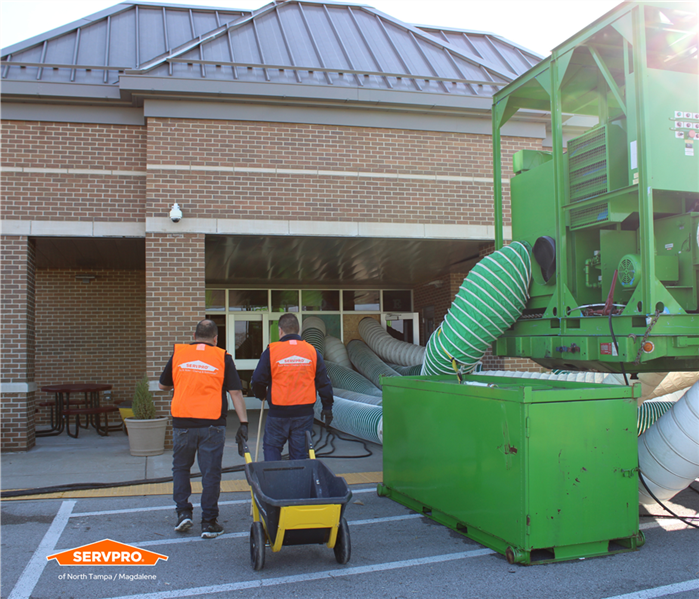What is SERVPRO’s Cleaning Process for a Commercial Large Loss?
1/31/2022 (Permalink)
 SERVPRO of North Tampa / Magdalene has the capability to restore large commercial buildings after a major storm.
SERVPRO of North Tampa / Magdalene has the capability to restore large commercial buildings after a major storm.
SERVPRO Cleaning Process After Catastrophic Commercial Emergencies
From 1980 to 2020, on average, the U.S. endured 7 severe climate events per year. Throughout the past year, that number has more than doubled, according to the National Centers for Environmental Information. Although statistics help describe the destruction brought on by natural disasters, no measurement can quantify the loss and trauma to individuals, families, and communities. The struggle of those involved as they work to rebuild a sense of normalcy is often not seen.
SERVPRO of North Tampa / Magdalene is proud to assist by offering Commercial Large Loss and Disaster Recovery services after any catastrophic emergency in the United States. With the resources of 17 SERVPRO franchise licenses in 6 locations throughout 3 southern states, we are well-positioned to respond to any disaster.
Our flexible, efficient team can tackle damage at private businesses, hospitals, schools, government facilities, and more. SERVPRO of North Tampa / Magdalene professionals are highly trained in fire, storm, and water damage mitigation. When mitigating damage on a large scale, our team uses the following framework:
Control the Environment
Commercial-sized desiccant dehumidifiers remove water from the air and dense materials while increasing the air temperature, further drying the structure, and helping to better control the environment.
Remove Contaminated Material
To ensure a safe and efficient clean-up, SERVPRO of North Tampa / Magdalene crews will remove contaminated material and items that are beyond repair and remove restorable items for off-site cleaning.
Dry the Structure
Various sized air movers and dehumidifiers are strategically placed throughout the structure to accelerate the drying process.
Our crews can be ready at a moment’s notice, deploying cutting-edge drying equipment and service vehicles that feature truck-mounted water extractors that operate even without electricity. Response time is critical for communities to get up and running again. When disaster strikes, we are ready to answer the call and make it “Like it never even happened.”





 24/7 Emergency Service
24/7 Emergency Service